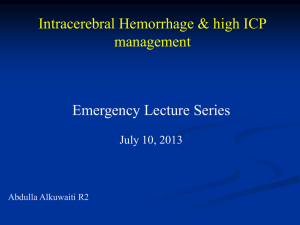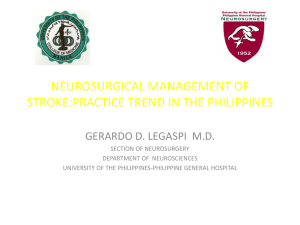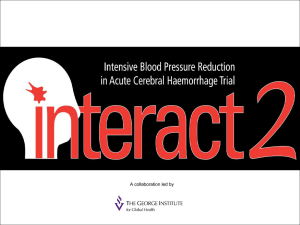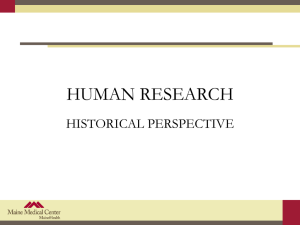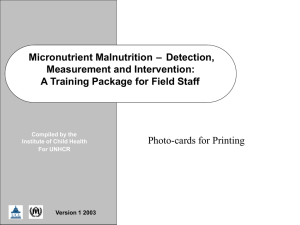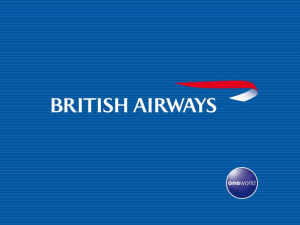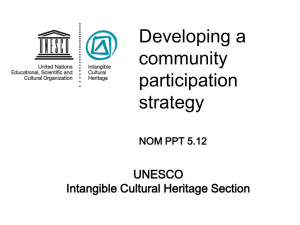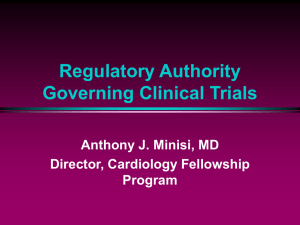AHD 2012 Sep 19_ICH_Course2_Teitelbaum_MNI
advertisement
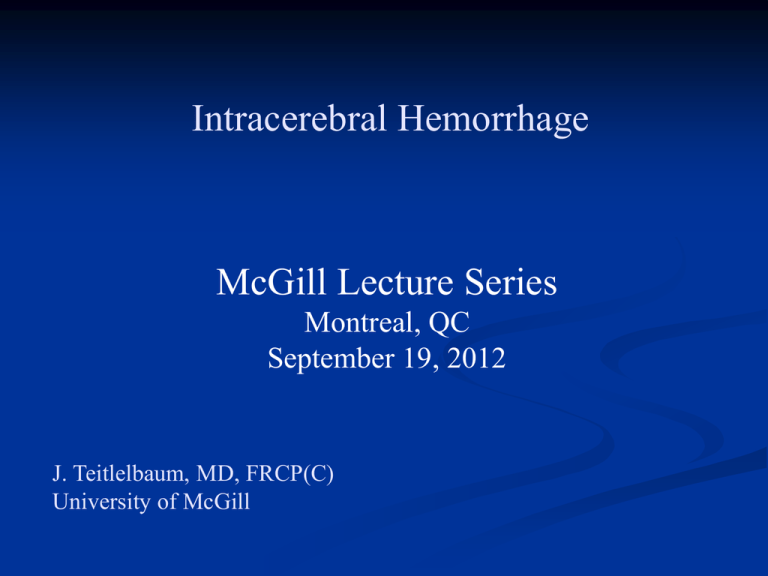
Intracerebral Hemorrhage McGill Lecture Series Montreal, QC September 19, 2012 J. Teitlelbaum, MD, FRCP(C) University of McGill Case History G.S. 68 year old R HBP, DB2, CAD 5PM, sudden R paresis Aphasia Ø headache, N or V G.S. Exam on arrival BP 190/100 P 75/min Alert, aware, mixed moderate aphasia CN: PERL, RHHA, R UMN VII, R ↓↓ sensation 2/5 strength R UE & LE ↓↓ sensation R hemi-body CT 5:30PM G.S. Sudden Deteriororation Exam at 7PM GCS 10, very somnolent, not obeying commands, groans & opens eyes to voice. Pupils 4mm L 3mm R reactive Poor airway protection Power 0/5 R UE & LE CT at 7:05 PM G.S. Now what ?? ICH Epidemiology & Etiology: primary vs secondary Factors that affect prognosis Management Evidence-based Eminence based Experimental & anecdotal The Guidelines Broderick J, Connolly S, Feldmann E, et al. Guidelines for the management of spontaneous intracerebral hemorrhage in adults: Circulation. 2007;116:e391–413. ICH Incidence in 2003 ICH Incidence year 2003 120,000 100,000 80,000 60,000 40,000 20,000 0 USA Japan EU5 Intracerebral Hemorrhage 15% of stroke in the West, 30% in the East 6 month prognosis dismal 40% dead (33% within 1 month) 40% disabled and dependent 20% independent Classification of ICH SECONDARY PRIMARY (78-88%) Hypertensive angiopathy (fibrohyalinosis) Amyloid angiopathy Anticoagulant Associated AVM Aneurysm Cavernoma Neoplasm Coagulopathy Alcoholic liver disease Hemophilia Hemorrhagic infarct Toxic-cocaine Dismal Prognosis 100% 90% Proportion of patients (%) 80% 70% 60% 50% 40% 30% 20% 10% 0% ICH Dead Dependent Ischemic Independent Factors Affecting Prognosis GCS on presentation Age Hemorrhage location Intraventricular hemorrhage ? Blood pressure Hemorrhage size Secondary Damage Hematoma expansion ≥ 80 ml fatal Cerebral edema Secondary injury ICH Score Component ICH score points GCS 3-4 2 (34/35 died) 5 - 12 1 (29/57 died) 13 - 15 0 (5/60 died) ICH volume ≥ 30 ml 1 ≤ 30 ml 0 IVH yes 1 no 0 Infratentorial 1 Age > 80 1 Mortality and ICH Score The relationship between ICH volume and patient outcome FULL RECOVERY DEAD Size is the most important predictor for patient outcome 38 ml 43 ml A patient with a haemorrhage the size of a ping pong ball is likely to have a better outcome than a patient with a haemorrhage the size of golf ball: –mortality on ’ping pong’ size: app. 40% –mortality on ’golf ball’ size: app. 70% Which are Modifiable ? GCS on presentation Age Hemorrhage location Intraventricular hemorrhage ? Blood pressure Hemorrhage volume Early growth occurs in all locations Brott (1997) Kazui (1994) Fujii (1996) N=103 N=186 N=359 Initial CT time 0-3 hrs 0-24 hrs 0-24 hrs Putamen 34% 16% 19% Thalamus 50% 21% 10% Lobar 32% 29% 6% Cerebellar 0% 25% 12% Pons 40% 40% 28% Other 43% 25% 13% TOTAL 38% 22% 14% Hematoma Evolution 3h 3h 2h 6h 24 h 24 h Predicting ICH expansion Time since onset Spot sign Blood pressure Shape of the hematoma CTA Source Images: Additional Data Spot Sign The Spot Sign: Growth Despite Treatment 2 hours 3 hours (CT Angiogram) rFVIIa 24 hours Predictive Value of Spot Sign: Time Dependent? 3 hours 4.5 hours 24 hours Spot Sign Early Growth: Conventional angiography Prognosis and Acute Blood Pressure ↑ Early Neurological Deterioration ↓ Functional Outcome (90 days) 1 month mortality (%) 1 month mortality (%) 100 80 60 40 20 0 -117 118-132 133-144 MAP (mm Hg) 145- Fogelhom et al, Stroke, 28: 1396-400, 1997 Okumura et al, J. Hypertension, 23: 1217-23, 2005 Blood Pressure and Hematoma Evolution Target max SBP No Enlargement Hematoma Enlargement 140 mmHg 16 2 150 mmHg 14 1 160 mmHg 22 8 9% p=0.025 30% 170 mmHg 8 5 Ohwaki et al, Stroke, 35: 1353-1367, 2004 ICH Management Treatment Modalities General supportive care Treatment of ICHT Hematoma resection Management of intra-ventricular hemorrhage Seizure prophylaxis Prevention of hematoma growth BP management Basic Algorithm ABC’s Do no harm Pain management & sedation Hyperventilation pCO2 30-35 mm Hg Osmotic therapy Ventricular drainage General Supportive Care HOB 30° SO2 ≥ 95% Glucose control ≤ 6.0 mmol T° control ≤ 37.5° C Pain control, sedation Hyperventilation Regional blood flow Oxygen extraction But: CMRO2 stable ad pCO2 = 10 mm Hg At the levels used in TBI, hyperV does not result in ischemia Pressure autoregulation dysfunction is improved Hyperventilation Present recommendation: Avoid during 1st 24H post TBI pCO2 30 – 35 mm Hg If no response: 25 – 30 mm Hg Hyperventilation My recommendation: Use for acute ICHT, temporizing measure pCO2 30 – 35 mm Hg Has no associated ischemia ad pCO2 10 Beware of hypoperfused areas that are more fragile 25 – 30 mm Hg Osmotic Agents Mechanisms of Action Mannitol BW in intact > affected brain volume vasoconsriction viscosity CBF vasoconstriction size of CVA, apoptosis HS BW in intact = affected brain Possible in size of CVA Osmotic Agents Clinical Use Routinely recommended in edema of trauma and stroke Lack of evidence of beneficial outcome Little evidence of efficacy in stroke or ICH (especially Na) Osmotic Agents Clinical Use Intermittent boluses allowing clearing of solute from blood. Avoid continuous infusions Smallest doses at the largest possible intervals, with prn according to ICP Osmotic Agents Clinical Use ICH with ICHT: MN first HS if refractory, Cr, OG Refractory to one agent: use the other 250cc MN, then 100cc alternating MN/HS Treatment of ICHT Intubation Hyperventilation Sedation Steroids: NO role Osmotic agents Mannitol Hypertonic saline No Δ in outcome Hematoma Resection STICH trial ICH within a centimeter of the cortical surface showed a benefit for early surgery mortality, no other effect on morbidity MISTIE: Intra-lesion rtpa with subsequent aspiration Intra-ventricular Hemorrhage EVD Intra- ventricular rtpa (CLEAR) Intra-ventricular rTPA Hanley DF: pilot, prospective, randomized, double-blind, controlled trial Speeds clearance of aneurysmal intraventricular hemorrhage Normalizes intracranial pressure Reduces ventricular catheter obstruction Early Hematoma Growth 2.0 hours after onset 6.5 hours after onset Prevent ICH Growth By BP By rFVIIa Percent Change in ICH Volume at 24 Hours Percent Change in ICH Volume by Treatment 70 70 65 65 Boxes depict 98.3% 60 60 confidence intervals 55 55 50 50 45 45 40 40 35 35 30 30 29% 25 25 20 20 16% 15 10 14% 15 11% 10 5 5 0 0 -5 -5 -10 -10 -15 -15 -20 -20 P lacebo 40 ug/kg rFV IIa 45% RR 80 ug/kg rFV IIa 52% RR 160 ug/kg rFV IIa 62% RR f vii- 1371/ cur r ent - 20JUN2004 - f ana_ct . sas/ f ana_ct . cgm Modified Rankin Scale at Day 90 160 µg/kg 80 µg/kg mRS 0-1 mRS 2-3 mRS 4-5 mRS 6 40 µg/kg Placebo 100% 80% 60% 40% 20% 0% Hematoma Evolution and rFVIIa Prospective Onset-CT interval (h) Brott Retrospective Fujii Kazui 3.3ml Takizawa 4.5ml 0-3 38% 18% 36% 17%5.8ml 3-6 N/A 8% 16% 6% 6-24 N/A rFVIIa within 4 hours: • Dose dependent attenuation of hematoma 2% 10% 0% expansion • no effect on mRS at 90 days Mayer et al. NEJM 2005; 352: 777-85 CTA Based rFVIIa Selection Trials The SpoT sign fOr Predicting and treating ICH growTh study: STOP-IT SPOTRIAS/NINDS PI: M. Flaherty ‘SPOT sign’ seLection of Intracerebral hemorrhage to Guide Hemostatic Therapy: SPOTLIGHT CSN/ CIHR PI: D. Gladstone Acute ICH < 6 hours CTA Spot Sign Positive rFVIIa Placebo NCCT at 24 hours Spot Sign Negative Seizure Prophylaxis Are seizures frequent post ICH ? Do they change outcome ? Does prophylaxis frequency ? Does a in Sz affect outcome ? Is therapy associated with adverse events ? Are seizures frequent post ICH ? ↑early Sz and late epilepsy (2003-2004) 1/3 pts: 50% electrographic (Neurology 2007) Do they change outcome ? Associated with expanding hemorrhages ICU stay Greater treatment cost edema, midline shift, re-bleeding, decreased functional recovery likelihood of poor long-term outcomes Does prophylaxis Sz frequency ? Redding et al 2011: No (DPH) Taylor 2011 Neurocrit Care: Yes (Keppra) 21% vs 16% Does a in Sz Improve Outcome Taylor 2011 Neurocrit Care: Yes (Keppra) Improved cognitive outcome vs DPH No untreated group CHANT study 2009: No (DPH mainly) So… There is an ↑in Sz post ICH (lobar) There is a likely effect on outcome Rx do ↓ Sz incidence This MAY improve outcome (Keppra IV) ICH BP Management Does BP affect outcome ? Does BP affect the penumbra? Does BP influence ICH growth? Does treatment alter any of these?? Prognosis and Acute Blood Pressure: ICH n=1097 1 month mortality (%) n=425 MAP (mm Hg) Fogelhom et al, Stroke, 28: 1396-400, 1997 Okumura et al, J. Hypertension, 23: 1217-23, 2005 Acute BP Management: Competing Rationales Impaired Autoregulation IV therapy suggested only for Systolic BP ≥ 180 mmHg (AHA Guidelines) Guidelines for Acute BP Management: ICH Stroke Council, American Heart Association IV therapy suggested only for Systolic BP ≥ 180 mmHg (or MAP > 130 mmHg) 2007: Consider target of 160 mmHg systolic, IF ↑ ICP not suspected Acute ICH BP Treatment Trials Trial Target Blood Pressure Agent(s) ATACH n=60 Nicardipine INTERACT n=400 170-200; 140-170; 110-140 systolic <140 mmHg systolic ICH ADAPT n=164 <150 mmHg systolic Labetalol± Hydralazine Multiple Blood Pressure and Hematoma Evolution Target max SBP No Enlargement Hematoma Enlargement 140 mmHg 16 2 150 mmHg 14 1 160 mmHg 22 8 9% p=0.025 30% 170 mmHg 8 5 Ohwaki et al, Stroke, 35: 1353-1367, 2004 Temporal Profile of BP after ICH 220.00 200.00 180.00 Systolic target <160mmHg 160.00 140.00 Systolic target 160179mmHg Time ho ur s 12 ho ur s 7 ho ur s 5 ho ur s 3 ho ur 1 in e 120.00 Ba se l Mean systolic blood pressure Blood Pressure over time in the three different target groups Systolic target >180mmHg INTERACT: Efficacy of Antihypertensives Target achieved: 42% (1h) 66% (6h) Drugs Used: 1. Furosemide 2. Urapidil INTERACT: Hematoma Expansion Rationale for Not Treating Blood Pressure Based on Dirangl and Pulsinelli, JCBFM, 1990 (SHR ICAO/MCAO) Systolic BP (mmHg) Autoregulation in ICH 160 150 140 130 120 First CTP 30 60 90 minutes minutes minutes Second CTP Peri-hematoma Edema and Injury Ischemic? Vasogenic? Astrocyte Pc Plasma Extravasation Capillary Perihematoma Edema is Not Cytotoxic Butcher et al, Stroke 35:1879-1885, 2003 Peri-hematomal Oligemia: CT Perfusion Peri-hematoma Oligemia: rCBF * P=0.01 * Penumbral Threshold BP (mmHg) Extreme BP Reduction and CBF Tie Time (minutes) Intracerebral Hemorrhage Acutely Decreasing Arterial Pressure Trial (ICH ADAPT) Protocol Acute ICH - onset within 24 hours SBP ≥ 150 mmHg Randomization (N=74) Target SBP <150 mmHg Target SBP <180 mmHg Labetalol ±Hydralazine Primary Endpoint: rCBF measured with CT perfusion 2 hours after randomization Butcher et al, IJS, 2010 So… in BP will prevent hematoma growth if: Within 1 hour To ≤ 160 mm Hg systolic Labetalol / Hydralazine BP does CBF but no in ischemia Ideal BP: 150 – 160 mm Hg systolic ICH Summary Poor prognosis Hematoma expands early (≤4h) ICH Expansion can be predicted HBP is a likely factor in prognosis Expansion Edema formation other ICH Summary Treatment: General Prevention of ICH enlargement: BP within 1h to ≤ 160 mm Hg syst rFVIIa Seizure prophylaxis: likely useful (Keppra IV) ICHT therapy: no Δ in outcome Sx: little if any benefit
